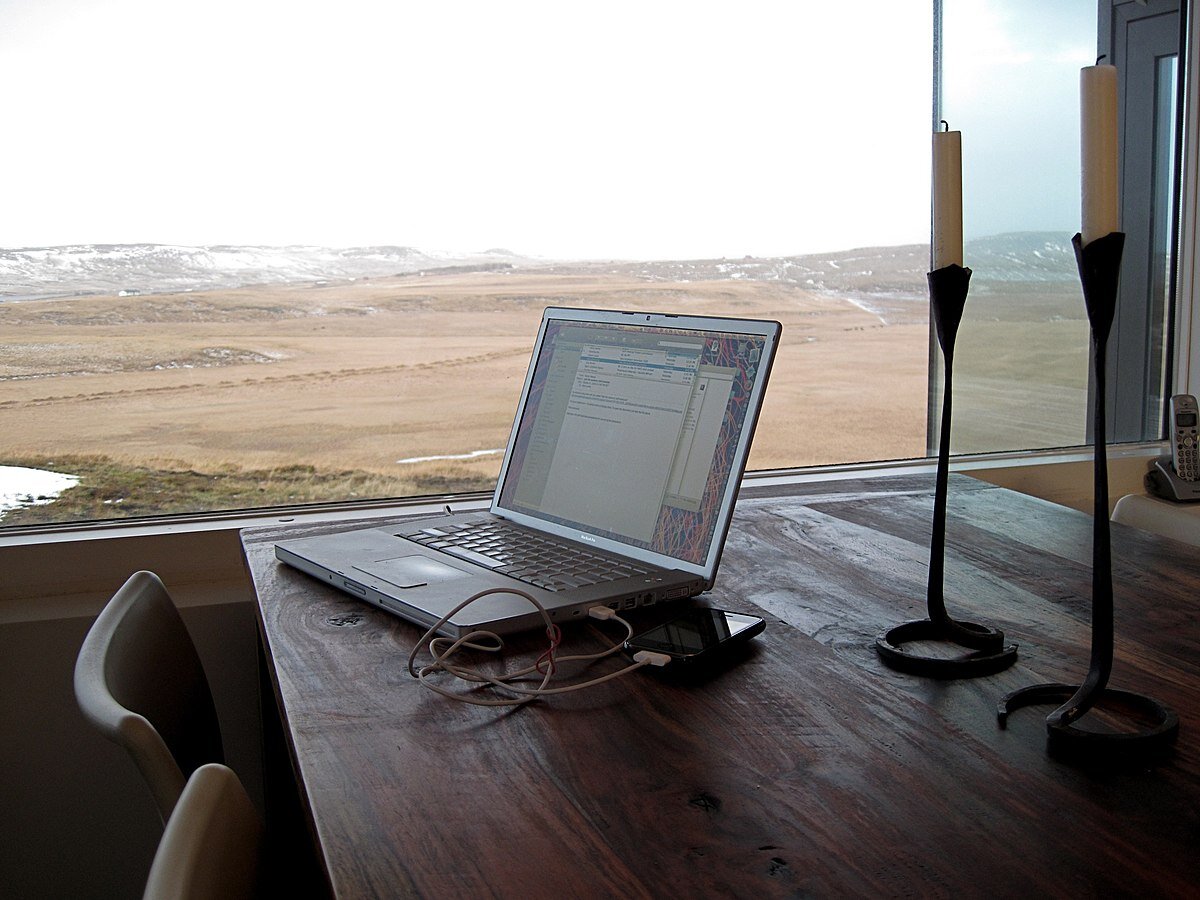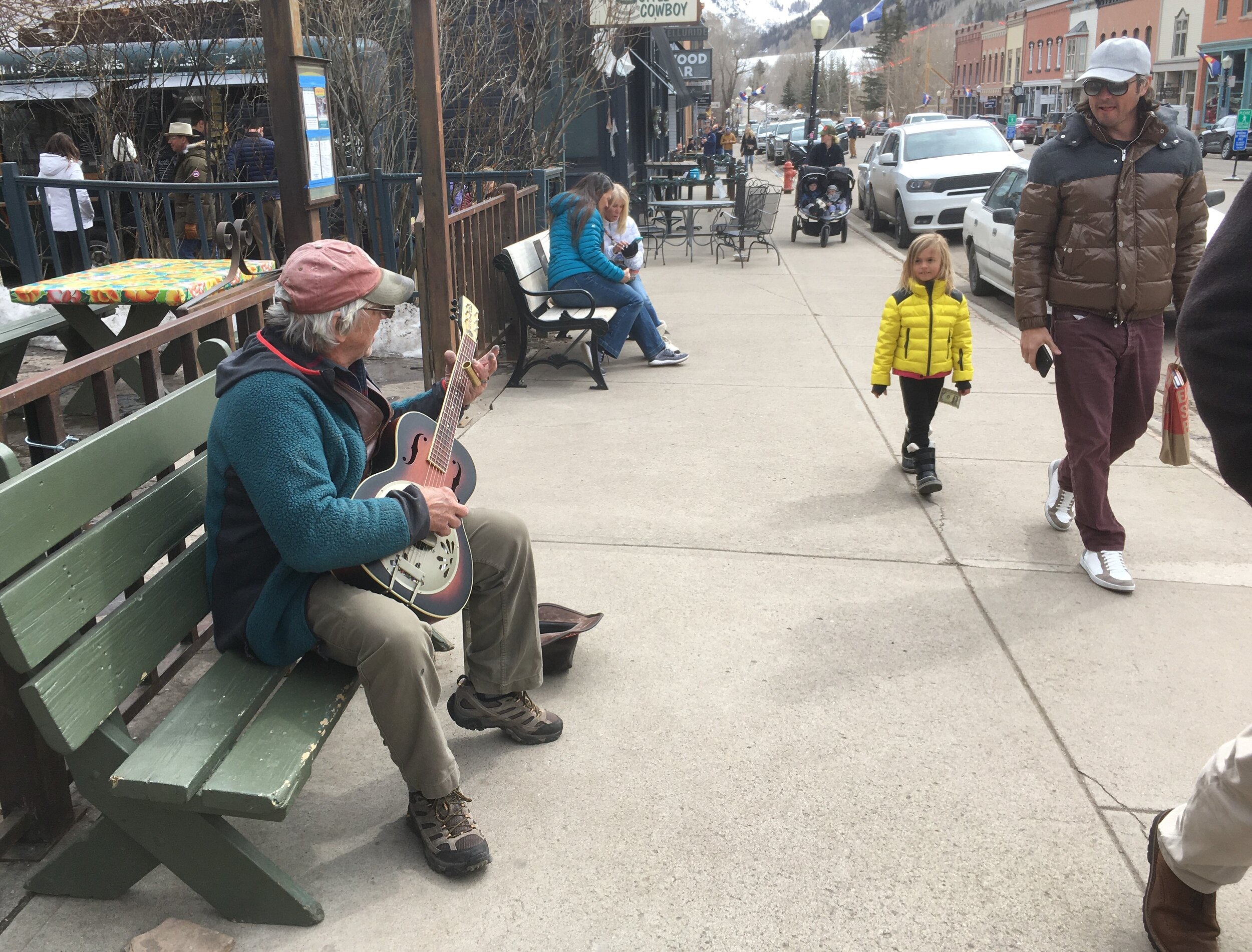By Matt Hoisch
“Brewing in these small pots like this,” Hudon explains, “is called Gongfucha.” Picture by Matt Hoisch.
Colin Hudon says the teahouse has been about a decade in the making.
“So I’ve been traveling extensively over the last 12 years around Asia to source these special teas and tea wares,” he explains.” And that hard work, he claims, has paid off. “I say this with humility, but I think we have one of the finest collections of tea in North America right now. Here.
Hudon owns Mountain Gate Teahouse & Art Gallery, which is opening next week in Telluride. I stopped by earlier this week to check out the spot and talk tea.
The renovated space off Main Street looks nothing like the bike shop it was in a previous life: white walls sandwiched between wood panelings that stretch across the floor and ceiling. Tea themed paintings Hudon commissioned from a Taiwanese tea mentor hang along the walls. Hudon says the renovation turned out to be more extensive than he and his team imagined. They redid the storage space, added a kitchen, and re-modeled the bathroom.
He says they were still painting walls and putting in the floor as they were approaching their original opening date back in March. But then the coronavirus hit, and running out of time was no longer an issue. Hudon says the four-month delay has given them a chance to tighten up some back end logistics, but they also had to fire all of the servers they’d hired for the March opening. And, because they weren’t going to have any major operating expenses until March, they weren’t eligible for the government’s coronavirus loan programs since those funds are based on operating expenses before shutdowns hit the economy.
So they got creative. Hudon says he was able to use his background in Chinese medicine to compensate for the lack of tea time.
“We’ve been able to put together an herbal preventative formula,” Hudon explains, “which they’ve used really effectively in a lot of the hospitals in China and Taiwan.”
He says through all of it, his years of studying, sourcing, and brewing tea have given him a helpful mindset to get through the unplanned pandemic. Brewing tea, he explains, is, after all, largely about water and understanding fluidity, change, and patience.
“So when you first start to brew a tea, the leaves are just opening,” Hudon says. “And then as you go through subsequent steepings it becomes very full bodied. And then yous tart getting to later steepings which are lighter but more mineral rich. And throughout that process, if you’re paying attention, you’re enjoying the impermanence of one cup to the other. So that’s where you start to tie together esoteric ideas with really practical, down-to-earth ideas.”
They’re ideas to master, especially since one more tectonic shift hit the teahouse team before the opening: Hudon’s business partner and girlfriend, Jade Rose, gave birth last week to their first child.
“It’s one of those things,” he says, “I don’t even know—I don’t even know—words don’t lend themselves very well to explaining what a profound and beautiful experience the whole process [of having a child] is.”
Hudon says they haven’t gotten much sleep with their days old child, but the teahouse is still prepping for the grand opening next week.
Tea themed paintings Hudon commissioned from a Taiwanese tea mentor hang along the walls in Mountain Gate Teahouse & Art Gallery. Pictures by Matt Hoisch.
Hudon brews some tea in a tiny clay pot and pours it into two smooth cream colored cups that each hold only a few sips.
“Brewing in these small pots like this is called Gongfucha and it’s out of Chaozhou, and it’s about a 350 year old tradition that developed alongside a lot of the martial arts in that area of China,” he says. “So it draws from economy of movement, economy of tea—using a small amount of tea, small cups. So frugality. And also there’s certain types of tea that are most conducive to brewing in this way.”
Even the type of clay the pot is made of makes a difference, he explain. “It softens the water. It changes the body of the tea quite a bit.”
And we drink
“It’s strong but it’s…it’s like on the cusp of being too strong,” I say after my first sip. “But in a good way.”
“Yeah,” Hudon says. “Yeah.”
Hudon says he wants the space to be a place for people to enjoy and learn about tea and Cha Dao, or The Way of Tea. People won’t be allowed to use phones or computers in the teahouse, he says. Rather, he wants a space for patrons to enjoy tea, artwork, and each other. Like leaves soaking in a pool of water. A spot in which to steep.
Featured Songs:
“Dorval” by Julia Kent
“Them” by Nils Frahm






























